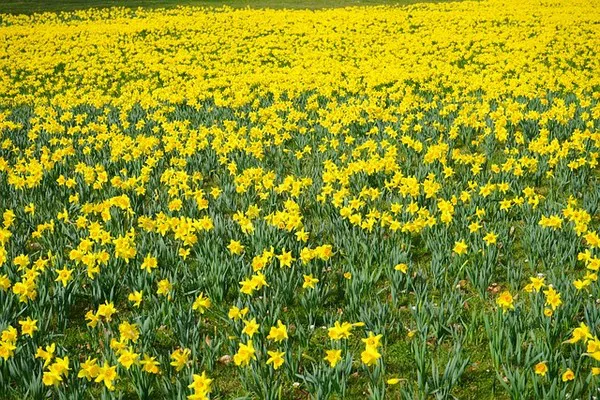As the winter chill gradually fades away, nature awakens, and gardeners eagerly anticipate the vibrant burst of colors that spring brings. If you’re looking to add a touch of natural beauty to your garden, planting wildflowers is an excellent choice. Wildflowers not only enhance the aesthetics of your outdoor space but also contribute to the local ecosystem by providing food and shelter for pollinators. In this comprehensive guide, we’ll explore the art of planting wildflower seeds in spring, covering everything from preparation to maintenance.
1. Selecting the Right Wildflower Seeds
Before you dive into the planting process, it’s crucial to choose the right wildflower seeds for your region and soil type. Consider native wildflowers as they are well-adapted to local conditions and are more likely to thrive. Research the specific needs of each wildflower species to ensure compatibility with your garden’s environment. Opt for a mix of annuals and perennials to enjoy continuous blooms throughout the growing season.
2. Timing Is Key: When to Plant Wildflower Seeds
Timing plays a pivotal role in the success of your wildflower garden. Spring is the ideal season for sowing wildflower seeds, typically from late March to early June, depending on your local climate. Planting during this window allows the seeds to establish strong roots before the harsh summer heat sets in.
3. Choosing the Right Site
Wildflowers are hardy, but they still need the right conditions to thrive. Select a site with well-draining soil and adequate sunlight. Most wildflowers prefer full sun, so choose a location that receives at least six hours of sunlight per day. Avoid areas with heavy foot traffic, as this can damage delicate seedlings.
4. Soil Preparation
Prepare the soil thoroughly to give your wildflower seeds the best start. Remove any weeds, rocks, or debris from the planting area. Loosen the soil to a depth of at least 4-6 inches to facilitate root penetration and water absorption. If your soil is poor, consider amending it with organic matter to improve fertility.
5. Seed Sowing Techniques
Sowing wildflower seeds may seem straightforward, but a strategic approach can yield better results. Mix the seeds with a carrier material, such as sand or vermiculite, to ensure even distribution. Broadcast the seed mixture evenly over the prepared soil, pressing the seeds lightly into the ground. Avoid burying the seeds too deep; a gentle raking or pressing down with a board can help ensure good seed-to-soil contact.
6. Watering and Germination
Consistent moisture is crucial for successful germination. Water the planted area gently immediately after sowing, and keep the soil consistently moist until the seeds sprout. Be patient, as germination times can vary depending on the species. Once the seedlings emerge, gradually reduce watering frequency, allowing the plants to adapt to natural rainfall patterns.
7. Thinning and Transplanting
As the seedlings grow, you may need to thin them to provide adequate space for healthy development. Follow the guidelines for each species, usually spacing the plants according to their mature size. Transplant any excess seedlings to other areas of your garden or share them with fellow gardening enthusiasts.
8. Mulching for Success
Mulching serves multiple purposes in a wildflower garden. It helps retain soil moisture, suppresses weed growth, and provides insulation for the developing plants. Apply a thin layer of organic mulch, such as straw or shredded leaves, around the seedlings, taking care not to bury them. Mulching also adds an extra layer of protection during unexpected temperature fluctuations.
9. Fertilization Practices
Wildflowers, especially native species, are adapted to thrive in nutrient-poor soils. Excessive fertilizer can lead to lush foliage but fewer blooms. If your soil is exceptionally poor, consider using a slow-release, low-nitrogen fertilizer sparingly. However, in most cases, wildflowers thrive without the need for additional nutrients.
10. Maintenance and Long-Term Care
Once your wildflowers are established, minimal maintenance is required. Remove any invasive weeds that may compete with the wildflowers for resources. Deadheading spent blooms can encourage continuous flowering and prevent self-seeding if you prefer a more controlled garden.
Conclusion
Planting wildflower seeds in spring is a rewarding endeavor that not only beautifies your surroundings but also contributes to the preservation of local ecosystems. By following these comprehensive steps, you’ll set the foundation for a flourishing wildflower garden that will enchant you with its natural charm for years to come. Embrace the rhythm of the seasons and sow the seeds of spring, ushering in a kaleidoscope of colors and life into your outdoor haven.


